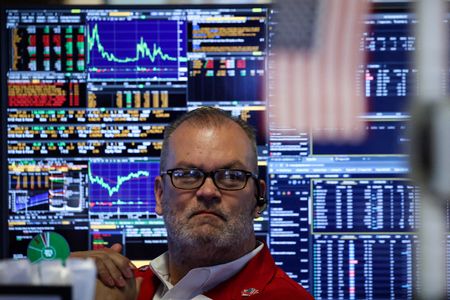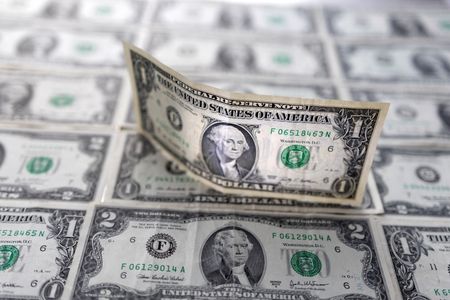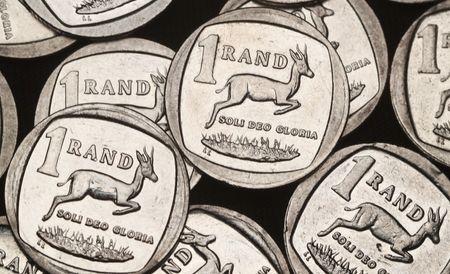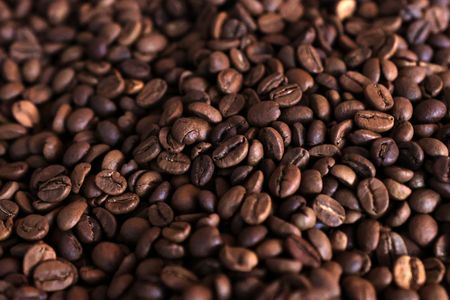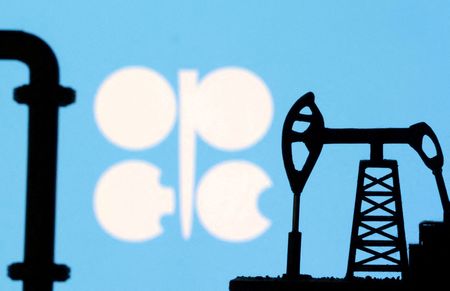By Chuck Mikolajczak
NEW YORK (Reuters) -Global stocks reversed course and were on pace to snap a four-session streak of gains on Wednesday, while the U.S. dollar extended gains after Federal Reserve Chair Jerome Powell dampened expectations for another U.S. interest rate cut by the central bank in December.
The Fed cut rates by 25 basis points, noting the limited data visibility due to the current U.S. government shutdown, and said it is ending the drawdown of its $6.6 trillion balance sheet, also known as quantitative tightening (QT) amid evidence that money market liquidity conditions have begun tightening and bank reserve levels are dropping.
Stocks initially held gains after the statement but retreated after Powell said “a further reduction in the policy rate at the December meeting is not a foregone conclusion. Far from it, policy is not on a preset course.” This sent U.S. Treasury yields and the dollar higher.
“He has basically done that in basically every press conference in which they have had a rate move, he has walked back market expectations for the next meeting,” said Tony Welch, chief investment officer at SignatureFD in Atlanta.
“We do think the risk to inflation in 2026 is higher and I do believe that December could end up being the last cut in this cycle. The market is expecting three cuts next year, and the market may be sorely disappointed on that.”
Markets were pricing in a roughly 85% chance of a December cut, which stumbled to about 65% following Powell’s comments, according to CME’s FedWatch Tool.
On Wall Street, U.S. stocks finished off their earlier highs, with the S&P ending the session virtually flat. U.S. stocks have been rallying to record levels recently on cooling U.S.-China trade tensions, expectations for rate cuts from the Fed, outsized spending related to artificial intelligence, and a solid start to the corporate earnings season.
Nvidia became the first company to cross the $5 trillion valuation mark on Wednesday. Its shares ended up 3%, a day after jumping 5% as CEO Jensen Huang said the AI chip leader will build seven new supercomputers for the U.S. Department of Energy, and that the company has $500 billion in bookings for its chips.
After the closing bell, Microsoft shed about 3%, Alphabet gained nearly 4% and Meta stumbled more than 6% as each of the megacap companies posted quarterly results.
The Dow Jones Industrial Average fell 74.37 points, or 0.16%, to 47,632.00, the S&P 500 dropped 0.30 points, or 0.00%, to 6,890.59 and the Nasdaq Composite rose 130.98 points, or 0.55%, to 23,958.47.
MSCI’s gauge of stocks across the globe slipped 0.61 points, or 0.06%, to 1,012.99 after hitting an intraday record of 1,017.24 while the pan-European STOXX 600 index closed down 0.06%.
Policy announcements from the Bank of Japan and European Central Bank are due later this week.
The dollar index, which measures the greenback against a basket of currencies extended gains after Powell’s comments and was last up 0.54% to 99.21, with the euro down 0.47% at $1.1594.
Against the Japanese yen, the dollar strengthened 0.47% to 152.82, while sterling weakened 0.67% to $1.318.
The Canadian dollar weakened 0.04% versus the greenback to C$1.395 per dollar. The Canadian currency had initially strengthened after the Bank of Canada reduced its key overnight interest rate to 2.25% on Wednesday, as widely expected, and signaled this could mark an end to its cutting cycle unless the outlook for inflation and the economy changes.
U.S. President Donald Trump and South Korean President Lee Jae Myung finalized details of their fraught trade deal at a summit in South Korea, and Trump also sounded an optimistic note about an upcoming summit with China’s Xi Jinping.
In U.S. Treasuries, the yield on benchmark U.S. 10-year notes extended gains after the policy announcement along with the Fed chair’s comments, and was last up 9.5 basis points at 4.0785, its biggest one-day jump since June 6. The 2-year note yield, which typically moves in step with rate expectations for the Fed, surged 10.8 basis points to 3.602%, also the biggest rise since June 6.
U.S. crude settled up 0.55% to $60.48 a barrel and Brent rose to settle at $64.92 per barrel, up 0.81% on the day on a large drop in U.S. stockpiles and optimism surrounding trade policies.
(Reporting by Chuck Mikolajczak; additional reporting by Elizabeth Howcroft in Paris, Ankur Banerjee and Rae Wee in Singapore; Editing by Gareth Jones, Kirsten Donovan and Richard Chang)

